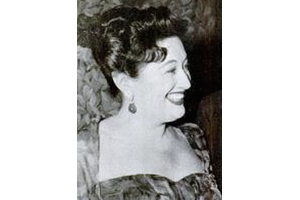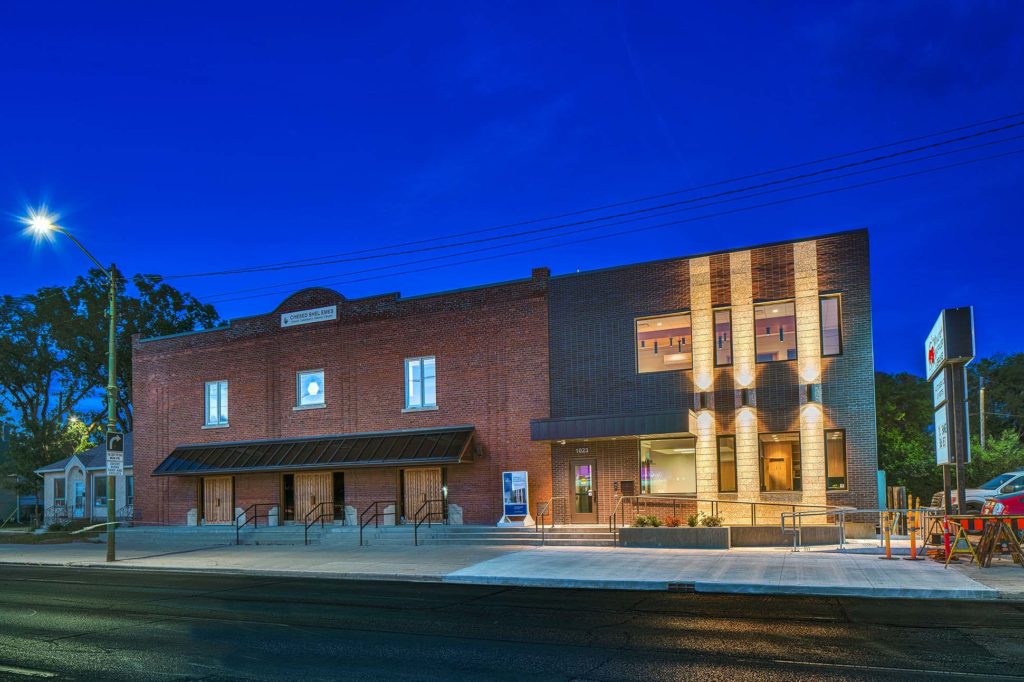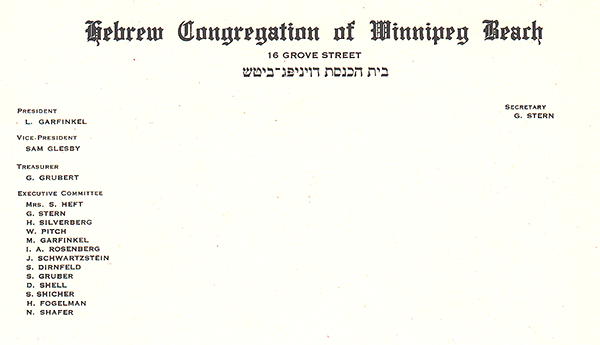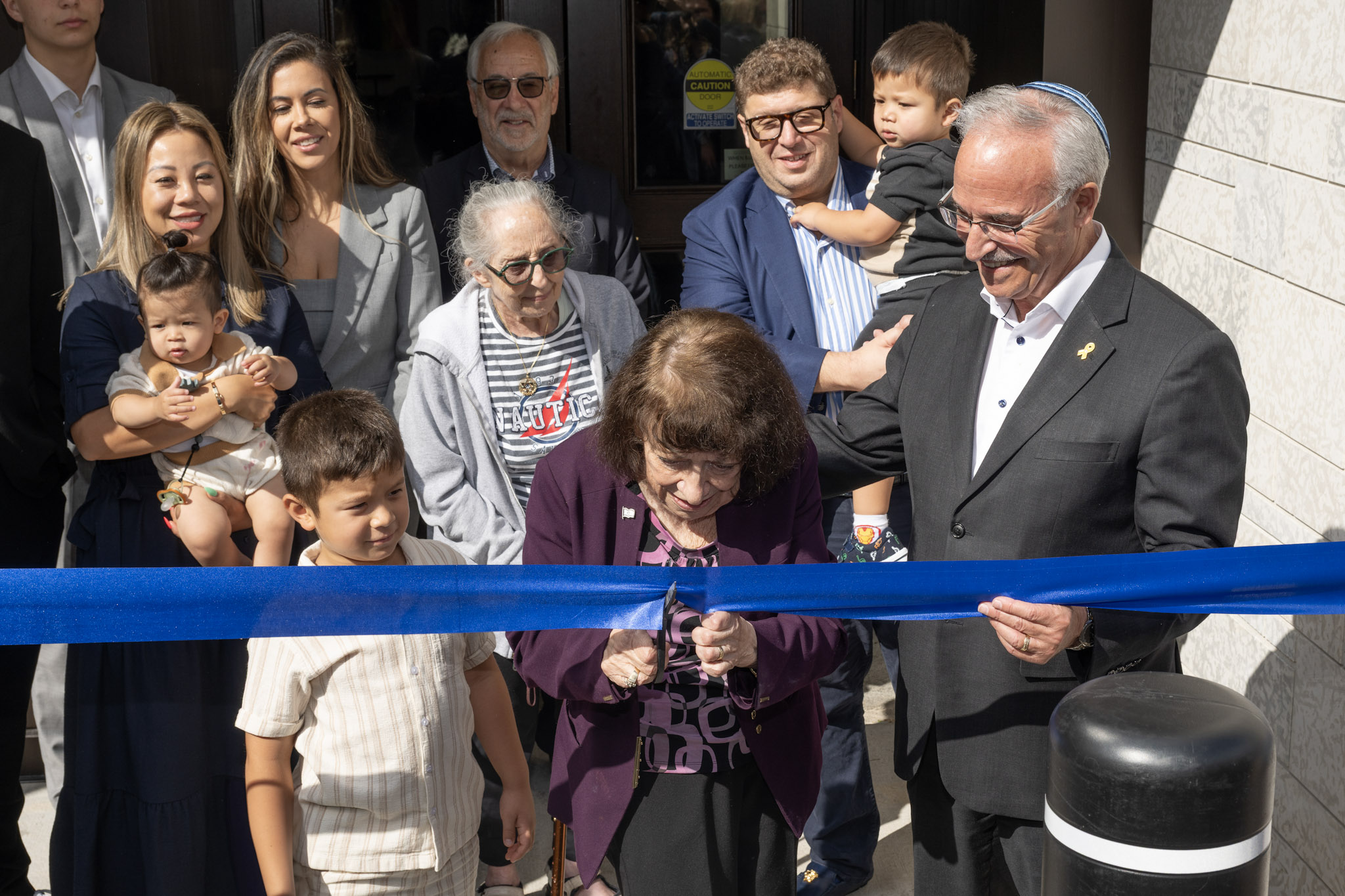Local News
Operation Ezra one of seven local organizations that received unexpected gifts totalling $1.5 million US

By BERNIE BELLAN I was recently contacted by Michel Aziza, who has spearheaded the drive to help Yazidi refugees known as “Operation Ezra”. Michel told me about a totally unexpected donation of $150,000 to Operation Ezra that was received from something called the Dorothy Strelsin foundation.
I was intrigued by this surprise gift to Operation Ezra. It turns out that the gift to Operation Ezra was just one of seven gifts made to local organizations by the Dorothy Strelsin Foundation.
Here is what I learned, after talking to an individual who had helped to guide the gift-giving process for a foundation about which no one here had heard until cheques started arriving recently.
Dorothy Strelsin, born Dorothy Dennis in 1913, was a one-time Broadway showgirl who had married a wealthy industrialist by the name of Alfred Strelsin.
According to information we were able to glean from the internet, Dorothy Strelsin had been an ardent supporter of the arts. Apparently, upon her death, a foundation was started in her name. The foundation has been under the direction of a good friend of Dorothy Strelsin’s, who has asked us not to divulge her name.
It turns out that the Dorothy Strelsin Foundation has grown considerably in the 20 years since its creation and, in that time, it has made donations to over 100 different organizations. From what we were told by an individual who has a close connection to the manager of the foundation, and who played a key role in suggesting Winnipeg organizations that were worthy of financial assistance, the person who has been managing the foundation wishes to bring it to a close. As a result, there has been a recent outpouring of gifts to a great many different organizations, including seven which have strong Winnipeg connections.
The six other local organizations, in addition to Operation Ezra, which received donations from the Dorothy Strelsin Foundation, include:
• The Assiniboine Park Conservancy’s Polar Bear Rescue & Care Team
• Harvest Manitoba (formerly Manitoba Harvest)
• Gaining Resources Our Way (G.R.O.W.) – a non-denominational program started by Karyn Lazareck in 2002 to help promote greater independence and self-reliance for young adults with special needs
• Siloam Mission
• BB Camp – to set up a fund to provide scholarships for Indigenous children in the Kenora area to be able to attend BB Camp’s day camp on Town Island
• The Rady JCC – for special needs programs
The funds allocated by the Dorothy Strelsin Foundation for each of the above organizations have already been distributed. As the individual who played a direct role in determining where funds from the Dorothy Strelsin Foundation would go in Manitoba told me, “it has been a humbling and rewarding experience”, first determining where those funds would go, and then seeing the impact that giving those funds has already had.
We have not heard from any of the organizations that received gifts from the Dorothy Strelsin Foundation, other than Operation Ezra. Here is what Michel Aziza of Operation Ezra wrote to me:
The generous and unexpected donation from the Dorothy Strelsin Foundation comes at a critical time for the Operation Ezra project as it continues to look for ways to help and assist many of the Yazidi families brought to Canada by the Government in 2017 and 2018.
While all the families privately sponsored by Operation Ezra through the generous contributions of our community are doing very well and have gained full independence, the 40 + families brought in by the government continue to face many financial and emotional challenges. As a result of this , Operation Ezra shifted its focus several years ago to helping these families. Many of the privately sponsored Operation Ezra families have become active volunteers for Operation Ezra in the resettlement and integration of these other struggling families.
The funds received from the Dorothy Strelsin Foundation will be applied to three main projects which include; The establishment of a small cemetery for the entire Yazidi community in Winnipeg; The expansion of the very successful farming project run in partnership with the Shelmerdine Garden centre; and an extensive and sustainable Food Assistance program for families who are still struggling financially .
A small committee has been established to discuss ideas for sustainable food assistance and this committee will oversee the management of the donated funds as well.
This most generous donation will have a significant impact on the Yazidi community. A Yazidi cemetery, the first and only one of its kind in Canada, has been on the Yazidi community wish list for several years. Its establishment will be key to a solid foundation for the long term sustainability of the community in Winnipeg. The farming project typically engages over 30 regular volunteers working the fields and providing fresh and healthy produce to a total of 52 families (approximately 400 individuals). The donated funds will allow Operation Ezra not only to expand the project to possibly other types of farming involving additional volunteers, it will also allow for the purchase of equipment and tools to help the Yazidi volunteers continue with this very successful project. The Yazidi community is paying it forward as well by donating approximately 10,000 lbs. of produce to local charities each year as a way of helping others.
All those involved with Operation Ezra are extremely grateful to the Dorothy Strelsin Foundation and its board of trustees for making it possible to continue to help build a resilient Yazidi Community in Winnipeg.
Post script: The unexpected donation to Operation Ezra is reminiscent of another large and unexpected donation ($725,000) that was made two years ago – to the Simkin Centre Foundation, by something called the Myer and Corrine Geller Trust. As I wrote around the time of that donation, I surmised that Myer Geller’s mother had been a resident of the Sharon Home.
The donation to Operation Ezra is also reminiscent of the $900,000 donation that was made by an anonymous “angel” in 2015 that went toward the purchase of the Gwen Secter Centre from the National Council of Jewish Women. (By the way, the NCJW had said that it wanted to sell the Gwen Secter Centre so that it could do something for addiction treatment here. I’m still waiting to hear what’s happened with that $900,000.)
I’ve also kept my word not to reveal the name of the angel who stepped up to save the Gwen Secter Centre, although I did discover who that person was.
There’s nothing like a surprise gift of hundreds of thousands of dollars to put a smile on someone’s face, is there?
Local News
Thank you to the community from the Chesed Shel Emes

We’re delighted to share a major milestone in our Capital Campaign, “Building on our Tradition.” Launched in November 2018, this campaign aimed to replace our outdated facility with a modern space tailored to our unique needs. Our new building is designed with ritual at its core, featuring ample preparation space, Shomer space, and storage, creating a warm and welcoming environment for our community during times of need.
We’re grateful to the nearly 1,000 generous donors who contributed over $4 million towards our new facility. A $750,000 mortgage will be retired in November 2025, completing this monumental project in just seven years.
We’re also thrilled to announce that our Chesed Shel Emes Endowment Fund has grown tenfold, from $15,000 to $150,000, thanks to you, the Jewish Foundation of Manitoba’s FundMatch program, and Million Dollar Match initiative in 2024. Our fund helps ensure that everyone can have a dignified Jewish funeral regardless of financial need.
As we look to the future, our goal remains to ensure the Chevra Kadisha continues to serve our community for generations to come. Our focus now shifts to replenishing our savings account and growing our JFM Endowment fund.
We’re deeply grateful for your support over the past several years.
It’s our privilege to serve our community with care and compassion.
With sincere appreciation,
Campaign cabinet: Hillel Kravetsky, Gerry Pritchard, Stuart Pudavick,
Jack Solomon, and Rena Boroditsky
Murray S. Greenfield, President
Local News
Winnipeg Beach Synagogue about to celebrate 75th anniversary

By BERNIE BELLAN (July 13) In 1950 a group of cottage owners at Winnipeg Beach took it upon themselves to relocate a one-room schoolhouse that was in the Beausejour area to Winnipeg Beach where it became the beach synagogue at the corner of Hazel and Grove.
There it stayed until 1998 when it was moved to its current location at Camp Massad.
On August 2nd members of the synagogue will be holding a 75th anniversary celebration.

As part of the celebration anyone who is a descendant or relative of any of the original members of the first executive committee (as seen in the photo here) is invited to attend the synagogue that morning.
If you are a relative please contact Abe Borzykowski at wpgbeachshule@shaw.ca or aborzykowski@shaw.ca to let Abe know you might be attending or for more information about the 75th anniversary celebration.
We will soon be publishing a story about the history of the beach synagogue, which is something I’ve been writing about for over 25 years.
Local News
Vickar Family cuts ribbon on new Tova Vickar and Family Childcare Centre

By MYRON LOVE In the words of Larry Vickar, the Shaarey Zedek’s successful Dor V’ Dor Campaign “is not only a renewal of the synagogue but truly a renewal movement of Jewish life in our community.”An integral part of that renewal movement was the creation of a daycare centre within the expanded synagogue. On Monday, June 23, Larry and Tova Vickar cut the ribbon, thereby officially opening the Tova Vickar and Family Childcare Centre in the presence of 100 of their family members, friends and other supporters of the project.
The short program preceding the morning ribbon-cutting began with a continental breakfast followed by a welcome by both Fanny Levy, Shaarey Zedek’s Board President, and Executive Director Dr. Rena Secter Elbaze. In Elbaze’s remarks, she noted that Larry and Tova wanted their family (including son Stephen and family, who flew in from Florida) and friends at the event to celebrate the opening of the Tova Vickar and Family Childcare Centre, “not because of the accolades, but because, as Larry put it, he hopes that their investment in the congregation will inspire others to do the same.”
“When Larry and I spoke about what this gift meant to him and the message he wanted people to take away,” she continued, “I couldn’t help but connect it to the teachings of Reb Zalman Schachter-Shalomi whose book – Age-ing to Sage-ing – changes the whole way we look at the concept of ageing and basing it on our ancestral teachings.”
She explained that his concept of “Sage-ing” is based on three key ideas – Discover your meaning and purpose; accept our mortality and think about the legacy you want to leave.
“Larry spoke about these exact concepts when we met,” she said.
Elbaze also noted the presence of Shaarey Zedek’s newly-arrived senior Rabbi Carnie Rose, former Rabbi Alan Green, and area MLAs Mike Moroz and Carla Compton.
Larry Vickar expressed his great appreciation for all those in attendance. “Tova and I are deeply moved to stand here with you today for this important milestone in our community”, he said. “We are grateful to be surrounded by all of you, the people we care about, our family and friends… you who have touched our lives and played some part in our journey.”
